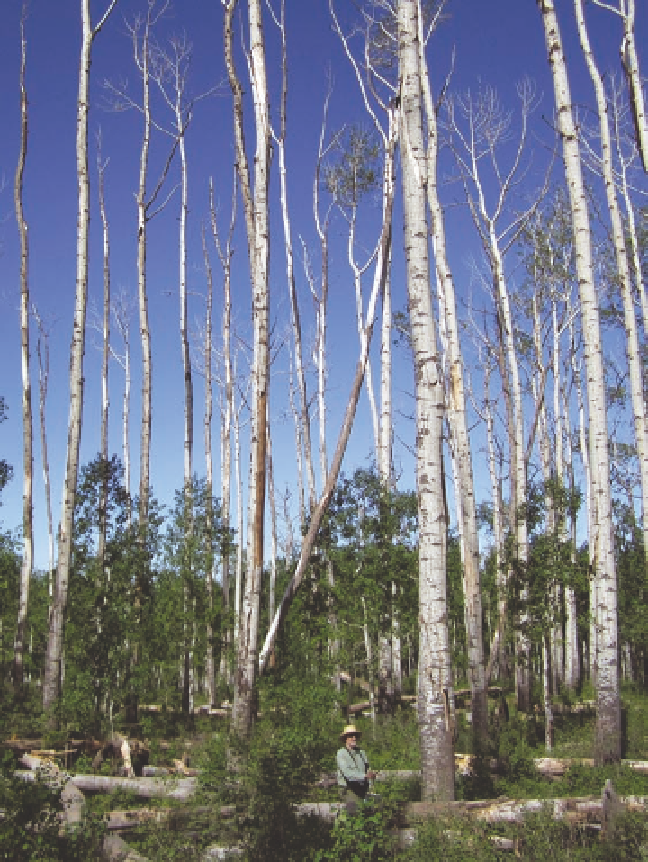Geoscience Reference
In-Depth Information
Fig. 12.16. Sudden aspen decline affected aspen
stands in various places throughout the Rocky
Mountain region during 2001-2005. in some
stands, most large stems died—though the root
systems did not. new sprouts are expected to
produce a new forest if they are not subjected
to another severe drought or to chronic excess
browsing by ungulates (see chapter 15). this
photo was taken on the Uncompahgre Plateau in
western colorado. elevation 9,500 feet. Photo by
Dan Bink ley.
move up and across the expansive Yellowstone Plateau
from the surrounding foothills where it now grows, as
the cool climate on the Plateau becomes warmer. that
would happen, however, only if Douglas-fir can tolerate
the relatively infertile rhyolitic soils found there.
mixes of species. Forests are likely to be more frag-
mented in the future (a topic that is considered further
in chapter 18), and extensive tracts of interior forest
may be less common than they are now. Meadows and
parklands may become more common, just as they did
during the warm and dry intervals of the past 10,000
years. it seems prudent for managers to conserve native
species where possible, take actions to minimize the
number of invasive species, and consider how the eco-
system services provided by forests in the past can be
extended into the future.
in sum, a cadre of scientists and managers is develop-
ing procedures for predicting, detecting, mitigating,
and adapting to the ecological changes that can be
may cover less total land area and be composed of novel

Search WWH ::

Custom Search